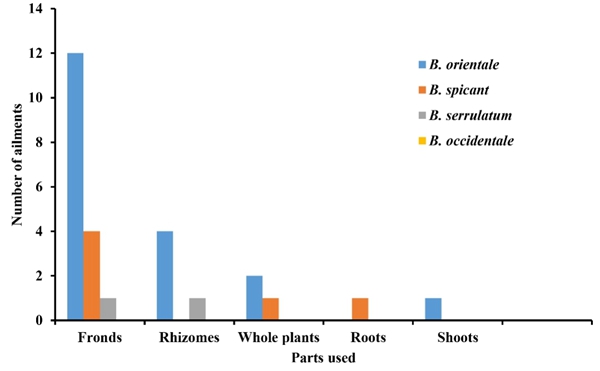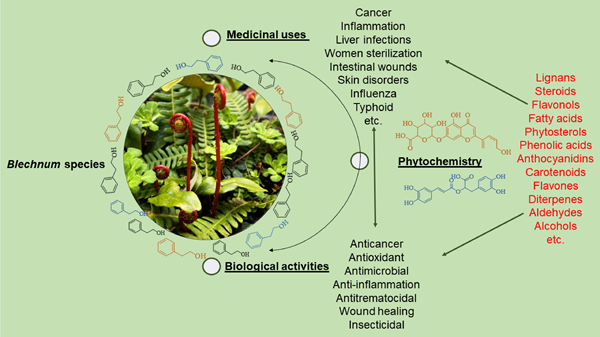Drifting from farm to traditional healing and ethnopharmacology, several valuable ferns belonging to the genus Blechnum are potential remedies for diverse complaints. Despite their significance, their herbal utilizations have not been extensively studied.
Researchers from Wuhan Botanical Garden reviewed the ethnopharmacological significance of some valuable Blechnum plants. Blechnum plants are characterized by the leathery fronds with circinate venation, simple lamina, and sometimes 1-pinnatifid or 1-pinnate stalks and leaf blades.
The genus Blechnum, with more than 236 species, belongs to the Blechnaceae family and is widespread in the intertropical, subtropical, and southern temperate regions of the world. Since antiquity, several species of this genus have been used in folk medicines to treat a variety of ailments such as typhoid, urinary infections, influenza, wounds, pulmonary complaints, blisters, boils, and antihelmintic-related complications.
Traditional herbal uses of Blechnum species (Image by WBG)
Related literatures described that different parts of Blechnum plants (fronds, rhizomes, whole plants, roots, and shoots) formulated in various forms, such as decoction, poultice, infusion, paste, and juice, which were utilized externally or by internal intake.
Application of Blechnum species against different ailments (Image by WBG)
About 91 secondary metabolites were isolated from different parts of Blechnum plants, among which phenolic compounds, sterols, and fatty acids were the main constituents. Several Blechnum species were found to exhibit a wide spectrum of biological activities including antioxidant, antimicrobial, anti-inflammatory, anticancer, insecticidal, antitrematocidal and wound healing. Quercetin-7',3',4'-trimethoxy, ponasterone, and phytol metabolites were associated with various biological activities such as antioxidant, antitrematocidal, and insecticidal.
Despite having a broad range of traditional medicinal benefits and biological properties, understanding the scientific connotations based on the available data is still constrained.
Foremost, only 20 of the 236 recognized species in the genus Blechnum have been evaluated for phytochemistry and bioactivities, while numerous other species are still unexplored. Secondly, most pharmacological analyses centered on crude extracts, with no emphasis on the specific metabolites associated with biological activities. Thirdly, in vitro models were mainly explored in assessing the pharmacological properties, with only a few studies employing the in vivo systems. In addition, the observed bioactivities were primarily random screenings with no link between traditional uses and pharmacological activities. Lastly, only a single report described the underlying mechanism of action of bioactive metabolites with pharmacological effects. These afore-mentioned aspects associated with the medicinal uses of Blechnum species necessitate further investigations to warrant their pharmaceutical applications.
Importantly, this review demonstrates the scientific basis for some of the medicinal uses of several Blechnum species and supports their traditional therapeutic claim as remedies to various ailments, validated by the majority of the pharmacological properties.
Medicinally applied Blechnum plants (Image by WBG)
The work was supported by the National Natural Science Foundation of China and Sino-Africa Joint Research Center, CAS. The students Emmanuel Nyongesa Waswa is the first author of this work, while Professor HU Guangwan is the corresponding author. Several other students contribute to the study.


